25 Banana Types: Health Benefits and Nutritional Values
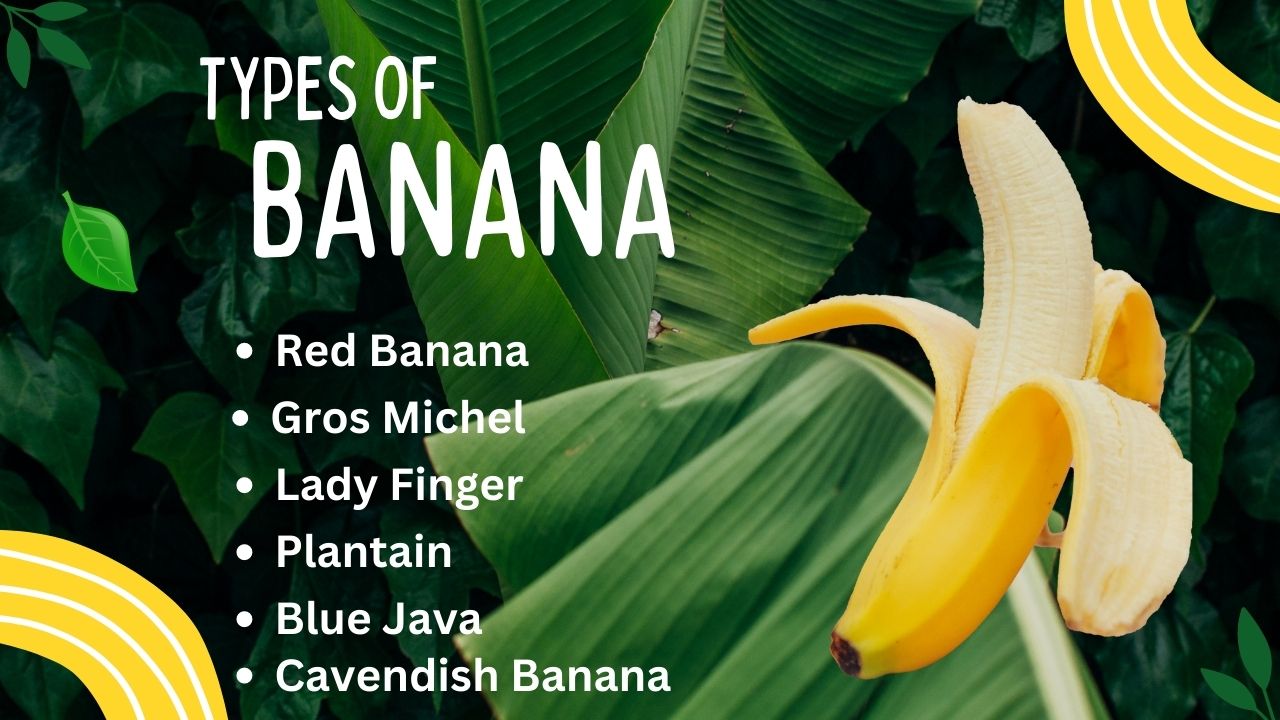
Written By Sania Malik || Reviewed By Adeel Abbas
Banana is a very popular fruit that tastes good and is healthy. There are about 1000 different banana types all around the world. Each has a different color and flavor. There are many different types of bananas that come in different shapes, sizes, and colors. [1]
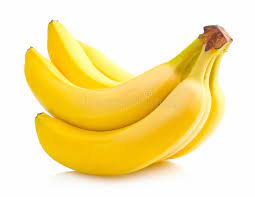
In this article, I will talk about 26 of the best types of banana. There are two main types: dessert bananas and cooking bananas.
Dessert bananas are very sweet and are good to eat as a snack or in desserts like Bananas Foster. Cooking bananas are more like potatoes – they are starchy and not very sweet, but they taste great in dinner dishes. Here are some of the best types of banana you can try.
Yellow vs. Green vs. Red Banana
Bananas come in three colors: green, yellow, and red.
Green bananas are not as sweet and are usually used for cooking.
Yellow bananas are the most popular and are sweet and soft. Some green bananas turn yellow when they ripen. [2]
Red bananas are smaller, sweeter, and softer than yellow ones and are also good for you. [3]
10 Sweet Dessert Bananas
There are many dessert types of banana. We will discuss only 10 types here.
1: Red Bananas
Red bananas as their name show that it has a reddish-purple skin and light pink flesh. It is the best type of banana. Red bananas vary in size. They are sweeter and softer than regular bananas, and they have a slightly raspberry-like flavor that makes them very tasty.
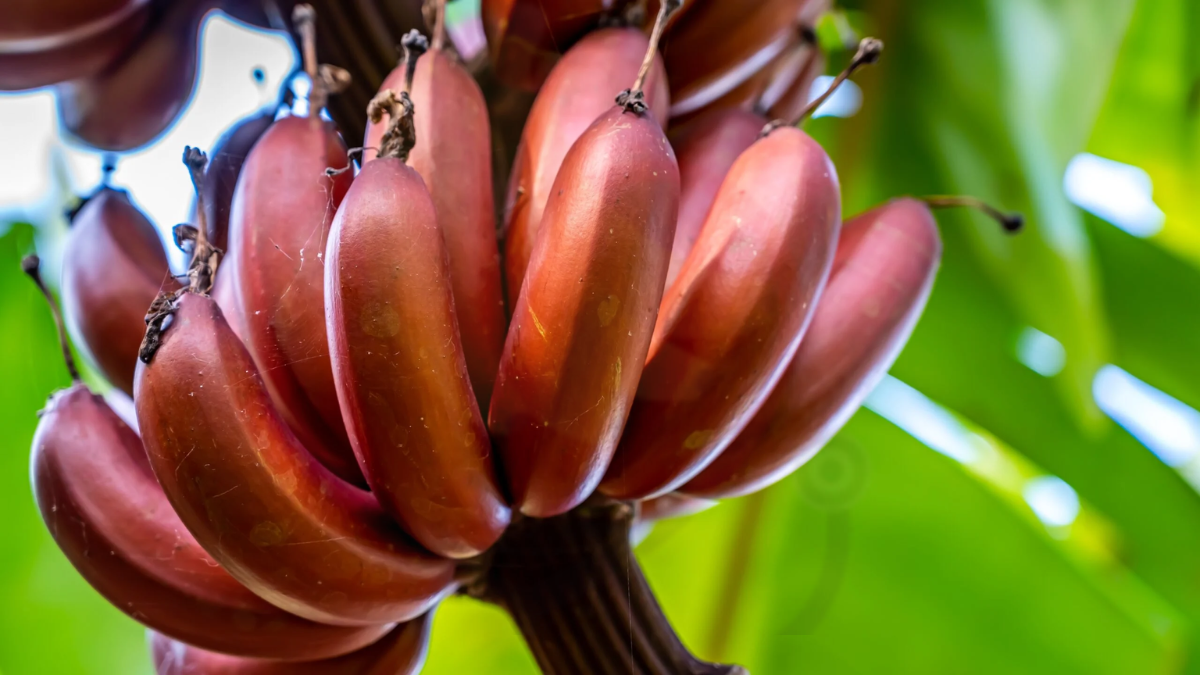
They are high in nutrition and have more vitamin C, beta carotene, iron, and potassium than regular bananas. [3]
Red bananas last longer and can be eaten whole or chopped and added to salads and desserts. They can also be baked, fried, or toasted, and are available in dried form.
Nutritional Value
Red bananas are a good . One medium-sized red banana contains approximately 90 calories, 23 grams of carbohydrates, and 3 grams of fiber.
Culinary Uses
Red bananas are delicious when eaten raw as a snack. They are also commonly used in desserts, such as in pies or cakes. In some cultures, they are also used to make jams or jellies.
2: Cavendish banana
Cavendish bananas are the most common type of bananas. They have smooth yellow skin and light yellow flesh that turns darker and sweeter as they ripen. You can eat them raw or use them in a variety of dishes. [4]
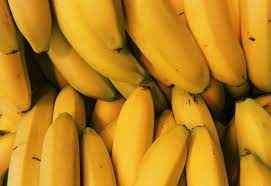
They are easily affected by diseases and genetic mutations, which can cause them to go extinct commercially.
Cavendish bananas are a common type of banana that you’ll often find in smoothies, fruit salads, and banana splits.
Nutritional Value
Cavendish bananas are a good fiber, vitamin C, and potassium source. One medium-sized banana contains approximately 105 calories, 27 grams of carbohydrates, and 3 grams of fiber.
Culinary Uses
Cavendish bananas are versatile and can be used in a variety of ways. They are delicious when eaten raw as a snack, sliced onto cereal, or mashed into smoothies. They are also commonly used in baking, such as in banana bread or muffins.
3: Blue Java Banana
Blue Java is a type of banana that is also known as “Ice Cream Banana” because of its creamy texture and vanilla flavor. [5] It has a bluish tint when it’s still green, which turns to a pale yellow when it ripens. The fruit is usually medium to large in size, and its skin is thick and tough.
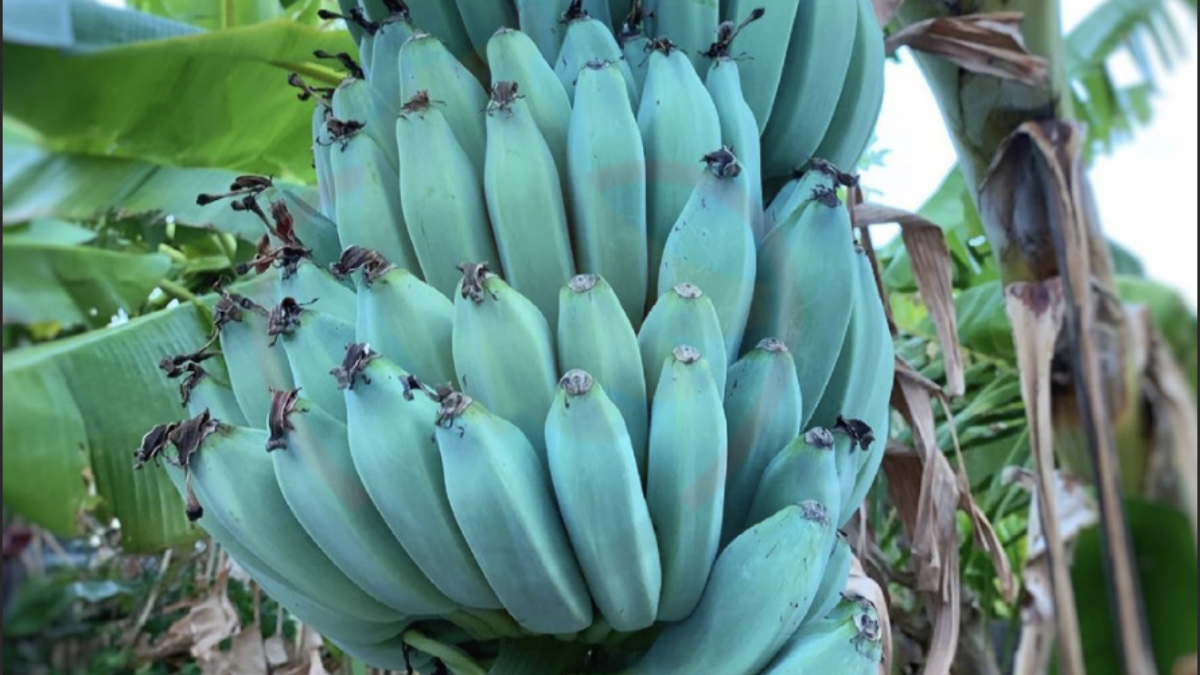
Blue Java is grown in the Southeast Asian region, Hawaii, and Central America. It is a relatively rare variety, and its availability is limited in some parts of the world. It can be eaten raw or used for cooking, and it’s known to have a higher nutritional value than the Cavendish banana.
Nutritional Value
Blue Java bananas are a good source of dietary fiber, vitamin C, and potassium. One medium-sized blue java banana contains approximately 105 calories, 27 grams of carbohydrates, and 3 grams of fiber.
Culinary Uses
Blue Java bananas are delicious when eaten raw as a snack, but their creamy texture makes them perfect for blending into smoothies or using as an ingredient in ice cream. They can also be used in baking for a unique and flavorful twist.
4: Gold finger Banana
Gold finger bananas taste like apples and are very sweet. They are yellow like regular bananas and won’t turn brown when cut. They were created by scientists in Honduras to be strong and survive in harsh weather.
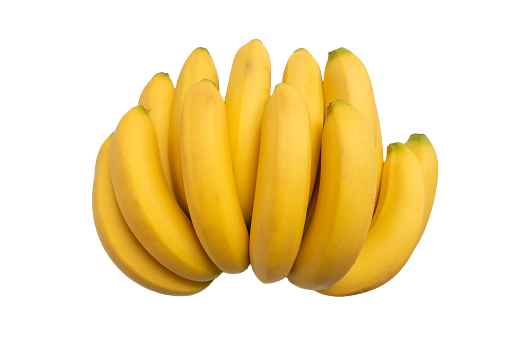
This variety is resistant to pests and diseases, making it a popular choice among growers. Gold finger bananas are often used in cooking and baking, as well as eaten as a healthy snack. They are high in fiber, vitamins, and minerals, such as vitamin C and potassium. [6]
Nutritional Value
- Goldfinger bananas are a great source of dietary fiber, which helps to promote healthy digestion and prevent constipation.
- They are also a good source of potassium, which helps to regulate blood pressure and support proper muscle function.
- Additionally, goldfinger bananas contain a range of vitamins and minerals, including vitamin C, vitamin B6, and manganese.
Culinary Uses
- Goldfinger bananas are a versatile ingredient that can be used in a range of sweet and savory dishes.
- They can be eaten raw as a healthy snack, or added to smoothies and shakes for a sweet and nutritious boost.
- Goldfinger bananas can also be used in baked goods, such as banana bread or muffins, for a delicious and healthy twist on traditional recipes.
- In savory dishes, goldfinger bananas can be used in curries or stews to add a touch of sweetness and creaminess to the dish.
- Additionally, goldfinger bananas can be sliced and grilled for a tasty and healthy dessert option.
5: Manzano Banana
Manzano bananas, also known as “apple bananas,” are small but very sweet. [7] They are sweeter than Cavendish bananas and taste like a mix of apples and strawberries.
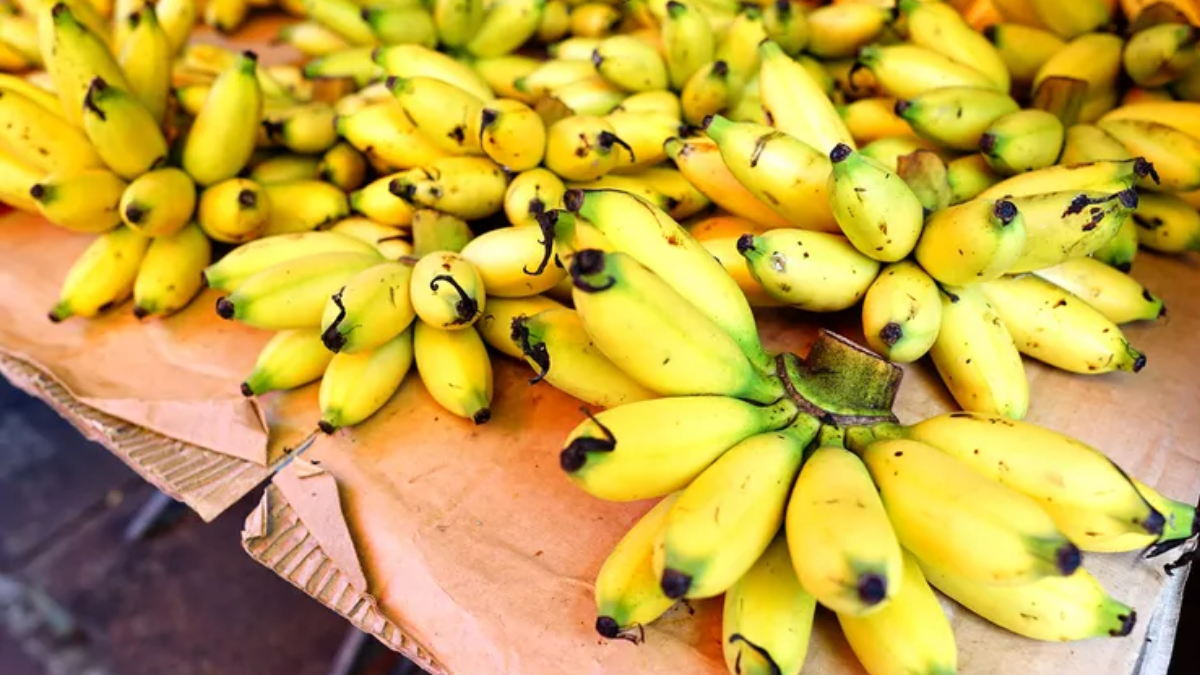
They are green when unripe and yellow when ripe. Manzano bananas are great for using in desserts like pies and smoothies, and can also be used in savory dishes like fritters and meat.
Nutritional Value
Manzano bananas are a good source of dietary fiber, vitamin C, and potassium. One medium-sized manzano banana contains approximately 100 calories, 25 grams of carbohydrates, and 3 grams of fiber.
Culinary Uses
Manzano bananas are delicious when eaten raw as a snack, but their unique flavor makes them perfect for use in recipes that call for a sweet and slightly tart ingredient. They are often used in Latin American cuisine, such as in empanadas or tamales.
6: Gros Michel Banana
Gros Michel is a banana variety that was popular in the past but is no longer widely grown due to its susceptibility to diseases. [8] It is also known as Big Mike. The fruit has a creamy, sweet flavor and a firm texture.
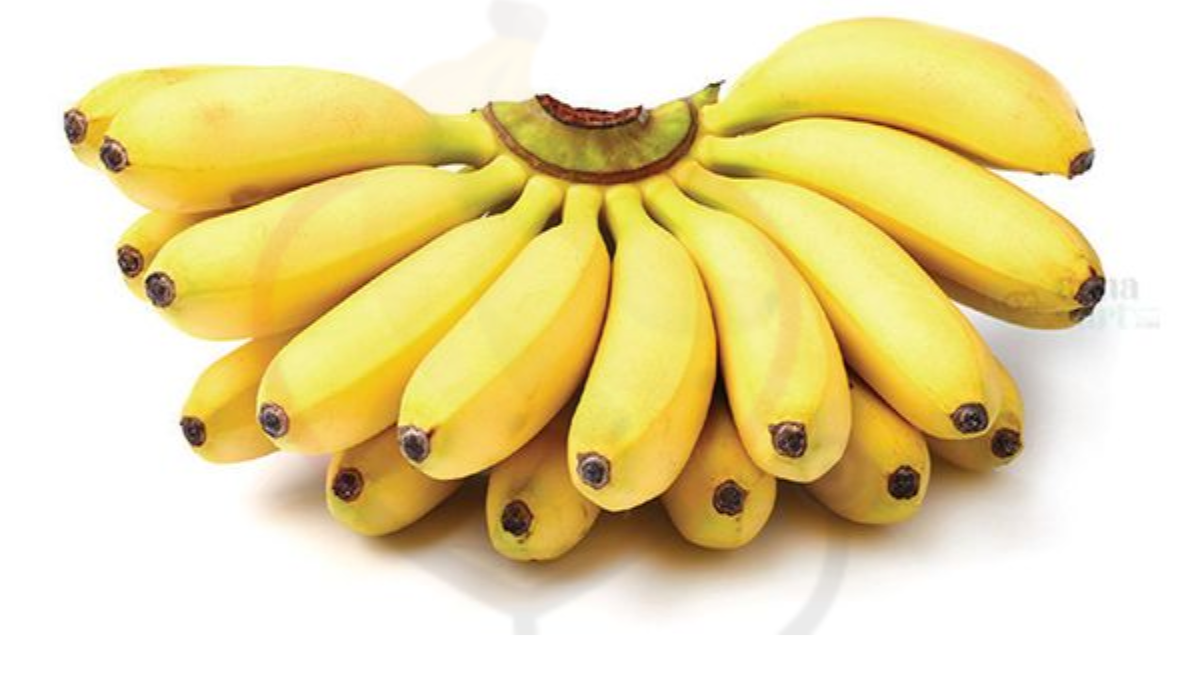
It was the most popular banana variety in the world until the 1950s, when a strain of Panama disease nearly wiped out the entire crop. Nowadays, it is mainly grown in small quantities for local consumption or export to niche markets.
Nutritional Value:
High in Potassium
Gros Michel bananas are an excellent source of potassium, which is essential for maintaining healthy blood pressure and heart function.
Rich in Fiber
These bananas are a good source of dietary fiber, which promotes healthy digestion and bowel movements.
Good Source of Vitamins
They are a good source of vitamins C and B6, which are essential for the immune system and brain function.
Culinary Uses
Baking
Gros Michel bananas are great for baking, as they are firm and hold their shape well. They can be used in bread, muffins, cakes, and even pancakes.
Smoothies and Shakes
These bananas make a great addition to smoothies and shakes, adding a sweet and creamy flavor.
Fried Snack
In some cultures, Gros Michel bananas are used as a snack food. They can be sliced and deep-fried to make a sweet and crispy treat.
Desserts
They can be used in a variety of desserts, including banana pudding, banana cream pie, and banana splits.
7: Lady Finger Banana
Lady Finger bananas are also known as “Baby bananas” due to their small size, about 3-5 inches long. [9] Lady Finger bananas are a small and slender variety of bananas. They have a slightly sweeter taste compared to Cavendish bananas and a slightly tangy aftertaste.
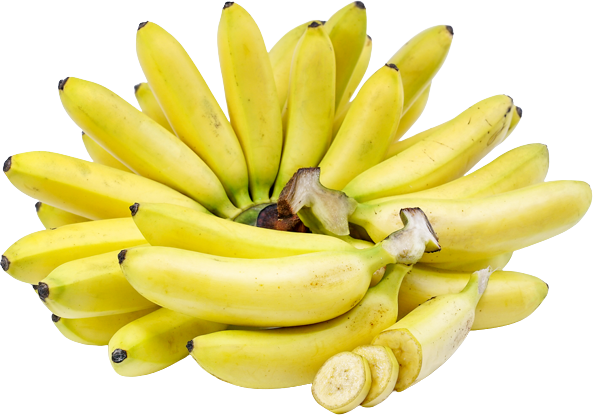
Their skin is bright yellow when ripe, and they have a delicate texture. They are also known as “Sugar bananas” and are a popular ingredient in smoothies, desserts, and baked goods. They are ideal for eating raw, particularly for children.
Nutritional Value
Lady finger bananas are a good source of dietary fiber, vitamin C, and potassium. One medium-sized lady finger banana contains approximately 90 calories, 23 grams of carbohydrates, and 3 grams of fiber.
Culinary Uses
Lady finger bananas are commonly used in desserts, such as in pies or cakes. They are also delicious when eaten raw as a snack or sliced onto cereal. They can also be used in smoothies or baked goods for a unique flavor.
8: Mysore Banana
Mysore bananas are a popular variety in India. They are relatively small, with a length of about 4-6 inches. When they ripe, their skin turns bright yellow and have a soft texture. [10]
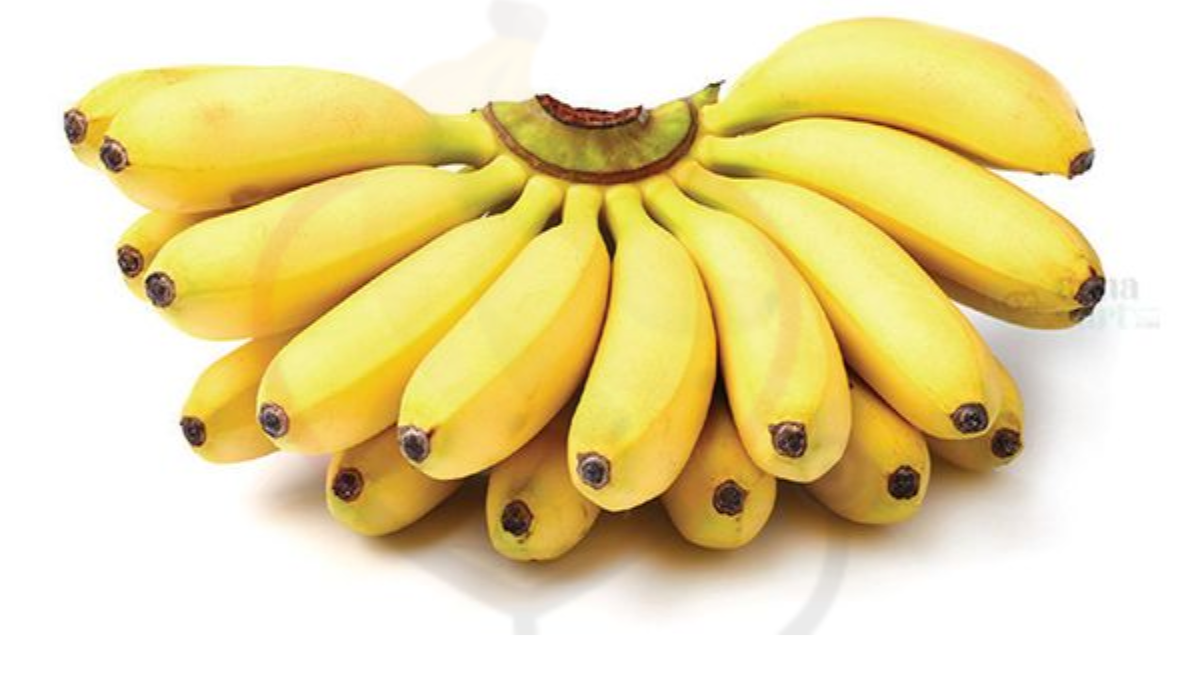
Their flesh has a sweet flavor and can be used in various culinary dishes, such as banana chips, cakes, and chutneys. This variety is also rich in potassium, vitamins B6 and C, and dietary fiber.
Mysore bananas are also known for their health benefits. They can improve digestion, boost energy, and even lower blood pressure.
Nutritional Value
- Mysore banana is a good source of dietary fiber, potassium, and vitamin C.
- It also contains small amounts of other vitamins and minerals like vitamin B6, magnesium, and manganese.
- The fiber in Mysore banana helps to promote digestion and regulate blood sugar levels.
- Potassium helps to maintain healthy blood pressure levels and supports the functioning of the nervous system.
- Vitamin C is an antioxidant that helps to protect the body from damage caused by free radicals.
Culinary Uses
- Mysore banana is a popular ingredient in Indian cuisine and is often used to make banana chips, banana bread, and other baked goods.
- It can be eaten ripe or unripe, depending on the dish.
- Ripe Mysore bananas are sweet and can be eaten as a snack or used in desserts like banana pudding or smoothies.
- Unripe Mysore bananas are starchy and can be boiled or fried and used in savory dishes like curries or stir-fries.
- Mysore banana leaves are also used in cooking as a natural wrapper for steaming or baking food.
9: Rajapuri Banana
Rajapuri is a sweet Indian banana, popular in Asia, with a dense, creamy texture. It’s 5-6 inches long and often eaten raw. It’s also grown as an ornamental plant and is smaller in size, only about 10 feet tall. [11]
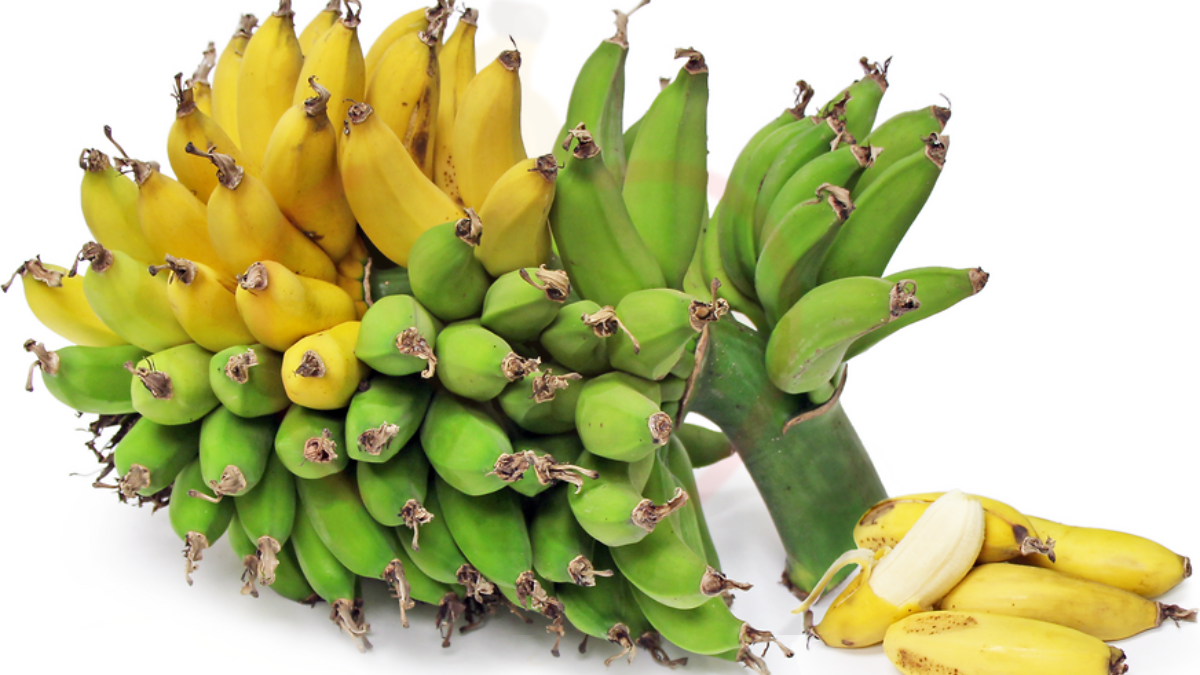
Rajapuri bananas have a firm and creamy texture and a sweet taste with a hint of tanginess. They are often used in Indian cuisine for making desserts, such as halwa, sheera, and banana chips.
Nutritional Value
Carbohydrates
Rajapuri banana is a rich source of carbohydrates, which provide energy to the body.
Fiber
It is also a good source of dietary fiber, which helps to regulate bowel movements and maintain digestive health.
Vitamins and Minerals
Rajapuri banana contains vitamins like Vitamin C, Vitamin B6, and minerals like Potassium, Magnesium, and Manganese.
Antioxidants
This banana is also rich in antioxidants, which help to protect the body from damage caused by free radicals.
Culinary Uses
Desserts
Rajapuri bananas are commonly used in desserts such as banana pudding, banana bread, and banana cakes.
Smoothies
They can be used to make delicious and healthy smoothies by blending them with other fruits, yogurt, and milk.
Curries
In some parts of India, Rajapuri bananas are used in curries and stews as a flavoring ingredient.
Snacks
Rajapuri bananas can also be sliced and dried to make banana chips, which are a popular snack in India.
10: Nanjangud Banana
Nanjangud bananas, also known as Nanjangud Rasabalehannu, are a unique Indian variety with distinct flavor, aroma, and texture. [12] They grow in black clay alluvial saline soil in the Nanjangud region, which gives them their special scent. Finding this variety in America is rare and may have a different flavor.
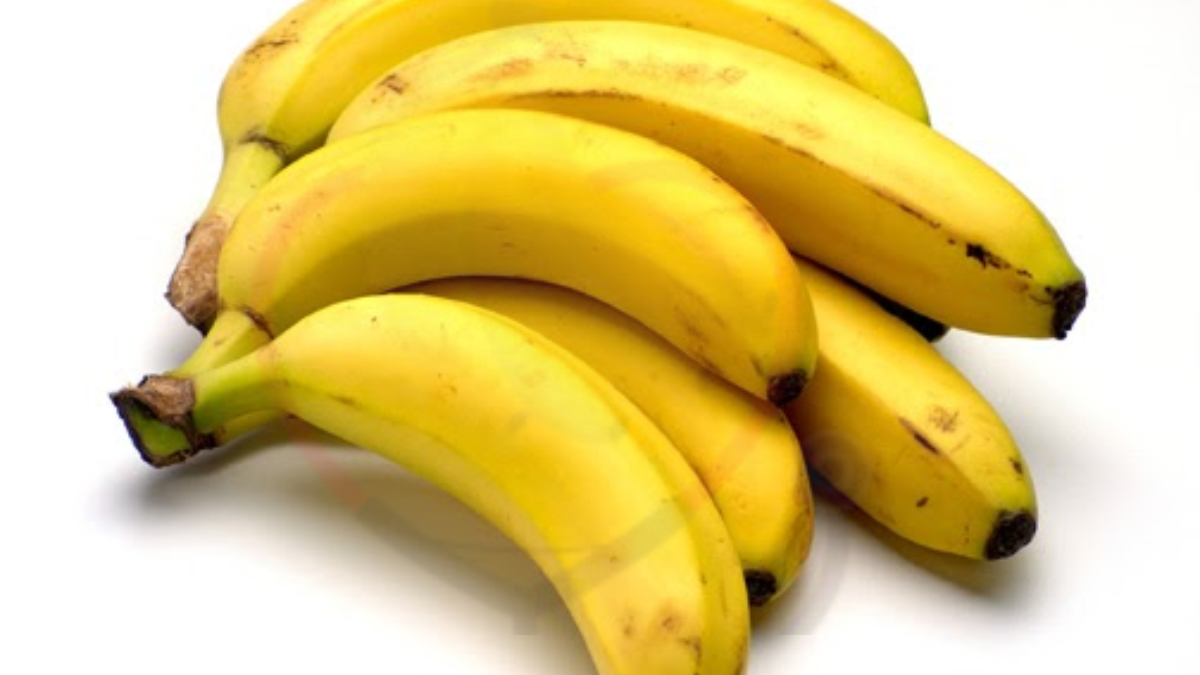
Nutritional Value
Nanjangud banana is a rich source of vitamins, minerals, and dietary fiber. One medium-sized banana (118 grams) contains:
- Calories: 105
- Carbohydrates: 27 grams
- Fiber: 3 grams
- Protein: 1 gram
- Fat: 0.4 grams
- Vitamin C: 17% of the RDI
- Vitamin B6: 20% of the RDI
- Potassium: 12% of the RDI
- Magnesium: 8% of the RDI
Culinary uses
Nanjangud banana can be eaten raw or cooked, with popular culinary uses including banana chips, banana halwa, banana dosa, banana bread, and smoothies. It is a versatile fruit that can be enjoyed in both sweet and savory dishes and is a great addition to a healthy diet.
Cooking Bananas (or Plantain)
11: Orinoco
Orinoco bananas, also called burro bananas, are versatile like praying hands. They resemble Cavendish bananas but are fewer rounds. When unripe, they’re starchy and used for cooking, especially in sweet and savory dishes, and pair well with pork. [13]
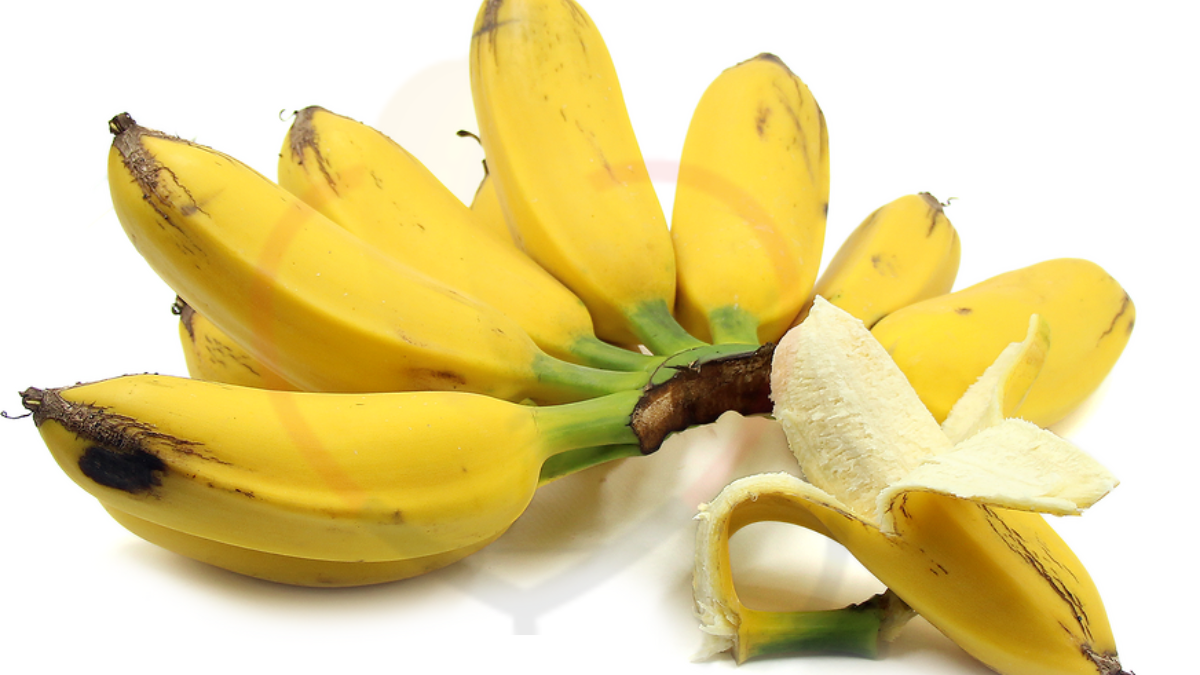
When ripe, they’re slightly firm with a lemon flavor, but better suited for cooking than eating raw. Orinoco bananas are also commonly used in making banana chips.
Nutritional Value
The Orinoco banana is a rich source of various essential vitamins and minerals. It is particularly high in potassium, which is important for maintaining healthy blood pressure and heart function. Additionally, it contains significant amounts of vitamin C, vitamin B6, and dietary fiber. Orinoco bananas are also low in fat and sodium.
Culinary Uses
Ripe Orinoco bananas can be fried to make crispy fried plantains, mashed and used as a base for various recipes like fritters, pancakes, and bread, added to smoothies and milkshakes for a creamy texture, or grilled and served as a simple dessert with a scoop of vanilla ice cream.
12: Fehi
Fehi bananas have orange to red skin and orange or yellow flesh. They should not be eaten raw due to their astringent flavor and are usually baked or boiled.
Some sub varieties can be eaten ripe and have a sweet taste. [14] They are rich in beta carotene and starch, but low in sugar.
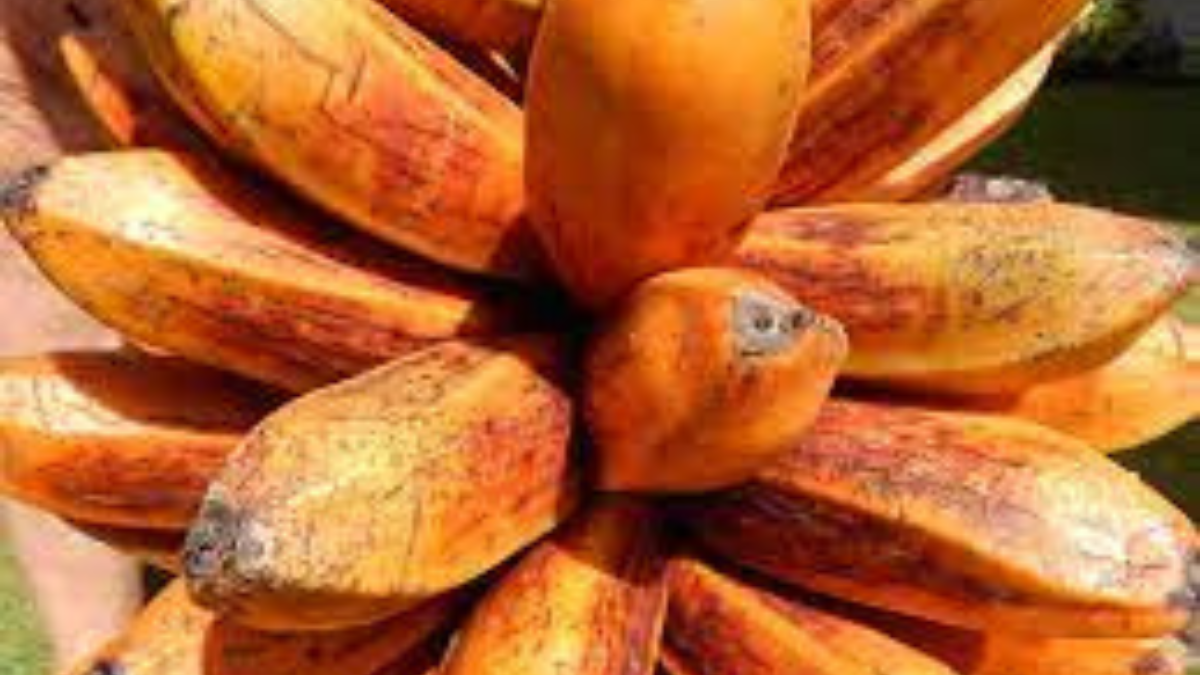
Nutritional Value
Rich in vitamins and minerals
Fehi banana is a good source of essential vitamins and minerals such as vitamin C, vitamin B6, potassium, and magnesium.
High in fiber
Fehi banana contains a high amount of fiber, which can help regulate digestion and promote satiety.
Low in fat and calories
Fehi banana is a low-fat and low-calorie food, making it a good option for people trying to manage their weight.
Culinary Uses
Boiled or steamed
Fehi banana can be boiled or steamed and served as a starchy side dish.
Grilled
Fehi banana can be grilled and served as a sweet and savory dessert.
Fried
Fehi banana can be sliced and fried to make chips or fritters.
Baked
Fehi banana can be baked into bread or muffins, or used as a natural sweetener in baked goods.
13: Bluggoe Banana
Bluggoe bananas are commonly used for cooking in Thailand, southern India, East Africa, and Myanmar. [15] They are large and have a straight shape with a starchy texture and a salmon-like taste. They can be used in curries, fries, roasted and baked dishes, and can also be eaten raw or used in desserts.
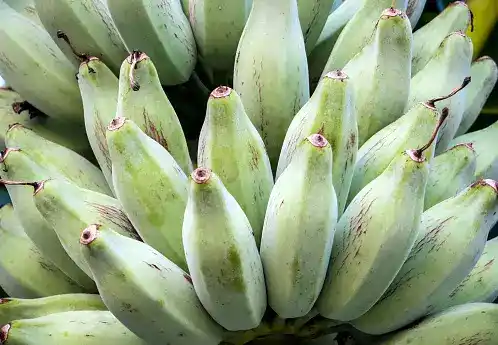
The fruit has a green skin that turns yellow when ripe and the flesh inside is white. Bluggoe bananas are rich in vitamins and minerals such as vitamin C, vitamin B6, and potassium.
Nutritional Value
Bluggoe bananas are a good source of dietary fiber, potassium, vitamin C, vitamin B6, and other essential vitamins and minerals. One medium-sized bluggoe banana contains approximately 110 calories, 29 grams of carbohydrates, 3 grams of fiber, and 1 gram of protein. Bluggoe bananas are also low in fat and cholesterol.
Culinary Uses
Bluggoe bananas are commonly used in savory dishes, such as stews, curries, and soups.
They can be boiled, fried, roasted, or baked and are often used as a substitute for potatoes or other starchy vegetables.
In some cultures, bluggoe bananas are also used to make a type of flour that is used in baking.
14: Macho Plantain Banana
Macho plantains are a type of plantain, which is a member of the banana family. They are larger and firmer than sweet bananas and have a thicker skin that turns from green to black as they ripen. It has sweet and sour taste. [16]
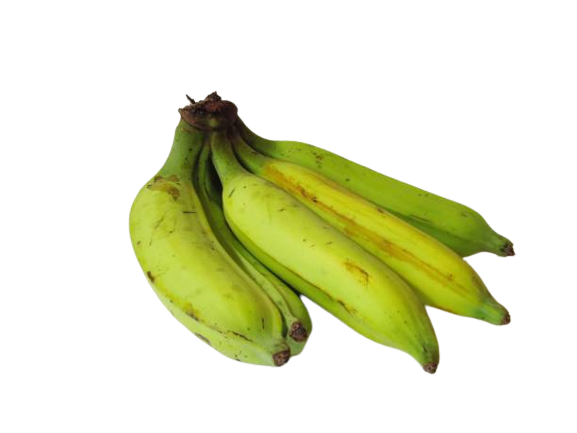
Macho plantains are commonly used in Latin American and Caribbean cuisine, where they are fried, boiled, or baked to make dishes such as to stones, mofongo, and plantain chips.
Nutritional Value
- Macho plantain bananas are a good source of dietary fiber, which can aid in digestion and help lower cholesterol levels.
- They are also high in vitamin C, which is essential for immune function and the formation of collagen, a protein that supports skin health.
- Macho plantain bananas also contain potassium, which is important for maintaining healthy blood pressure and heart function.
Culinary Uses
- Macho plantain bananas can be boiled, fried, baked, or grilled and are often used as a side dish or ingredient in stews, soups, and other savory dishes.
- They can also be sliced thinly and fried to make plantain chips, which are a popular snack in many Latin American and Caribbean countries.
- In some cultures, macho plantain bananas are mashed and used as a base for various dishes, such as mofongo, a Puerto Rican dish made with mashed plantains, garlic, and pork cracklings.
- Macho plantain bananas can also be used in sweet dishes, such as banana bread or fritters, although they are less sweet than sweet bananas and may require additional sweeteners to achieve the desired flavor.
15: Pisang Raja Banana
Pisang Raja is a type of banana that originated from Indonesia. Its name means “King Banana” in Indonesian. It is known for its sweet and creamy flavor and its soft texture. [17]
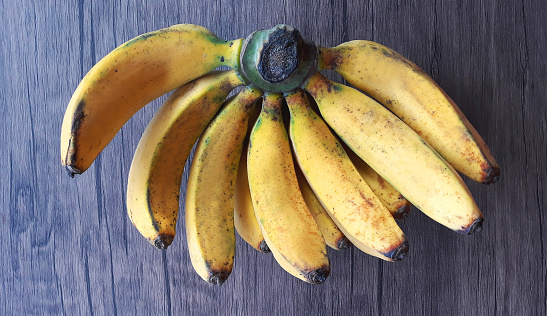
Pisang Raja bananas are typically smaller in size compared to other varieties, and they have a slightly curved shape. They are usually eaten as a snack or used in desserts, but they can also be used in cooking. Pisang Raja is a popular banana variety in Southeast Asia.
Nutritional Value
- Pisang Raja bananas are a good source of dietary fiber, which aids in digestion and promotes bowel regularity.
- They are also high in potassium, which helps regulate blood pressure and supports heart health.
- Pisang Raja bananas contain vitamins C and B6, which support immune function and brain health, respectively.
- Additionally, Pisang Raja bananas are a good source of antioxidants, which protect cells from oxidative damage.
Culinary Uses
- Pisang Raja bananas are commonly eaten as a snack when ripe. They have a sweet, creamy flesh with a hint of tanginess and a slightly sticky texture.
- They are also used in various dishes, such as pisang goreng (fried banana fritters) and kolak (a sweet dessert made with coconut milk, palm sugar, and various fruits, including Pisang Raja).
- Pisang Raja bananas can also be mashed and used as a natural sweetener in baked goods or smoothies.
- Unripe Pisang Raja bananas can be cooked and used as a starchy vegetable in savory dishes such as curries or stews.
16: Barangan Bananas
Barangan bananas are a seedless type with a yellow peel and sweet, firm, white flesh. They’re popular for desserts in tropical regions like North Sumatra, Indonesia. [18]
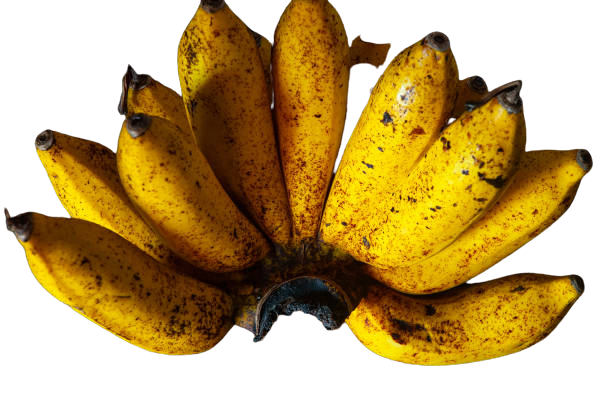
This variety is also rich in nutrients like vitamins, carbohydrates, and proteins. Barangan bananas are often used for cooking and have a starchy texture, but they can also be eaten raw.
Nutritional Value
Barangan bananas are a good source of several essential vitamins and minerals. They are particularly rich in vitamin C, which helps support the immune system and promotes the absorption of iron. They also contain significant amounts of vitamin B6, which is essential for proper brain function and the production of red blood cells.
Culinary Uses
- Barangan bananas are a versatile ingredient that can be used in a variety of sweet and savory dishes.
- Barangan bananas can also be used in smoothies, milkshakes, and baked goods like banana bread.
17: Dwarf Jamaican Banana
Dwarf Jamaican bananas are a visually stunning variety that ripens to an almost purple-red color with a sweet, raspberry-like flavor. [19] They are best used for baking desserts, making nice cream, and as a grill wrap for meat. This variety is sweet and has a tangy flavor. People mainly use them for cooking or frying.
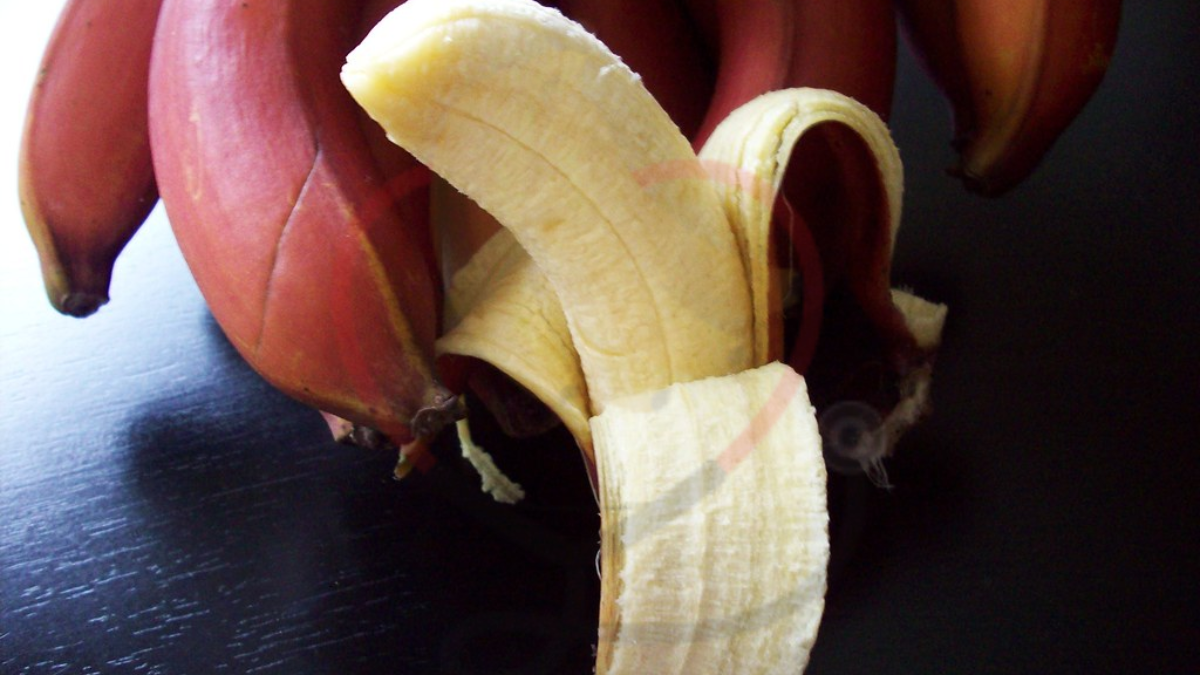
Nutritional Value
Dwarf Jamaican is a low-calorie vegetable that is rich in dietary fiber, vitamins, and minerals. It is an excellent source of vitamin C, vitamin K, folate, and potassium. Additionally, it contains small amounts of calcium, iron, and magnesium.
18: Rhino Horn Banana
The Rhino Horn banana, also known as African Rhino Horn or Rhino Horn plantains, is the largest variety of bananas, with some fruits growing up to 24 inches. [20]
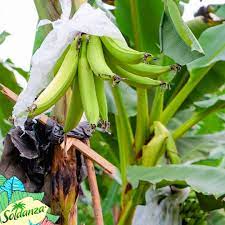
19: Saba Banana
Saba bananas are big, angular-shaped bananas that come from the Philippines. They have thick skin and grow well in warm places. People often use them for making desserts. [21]
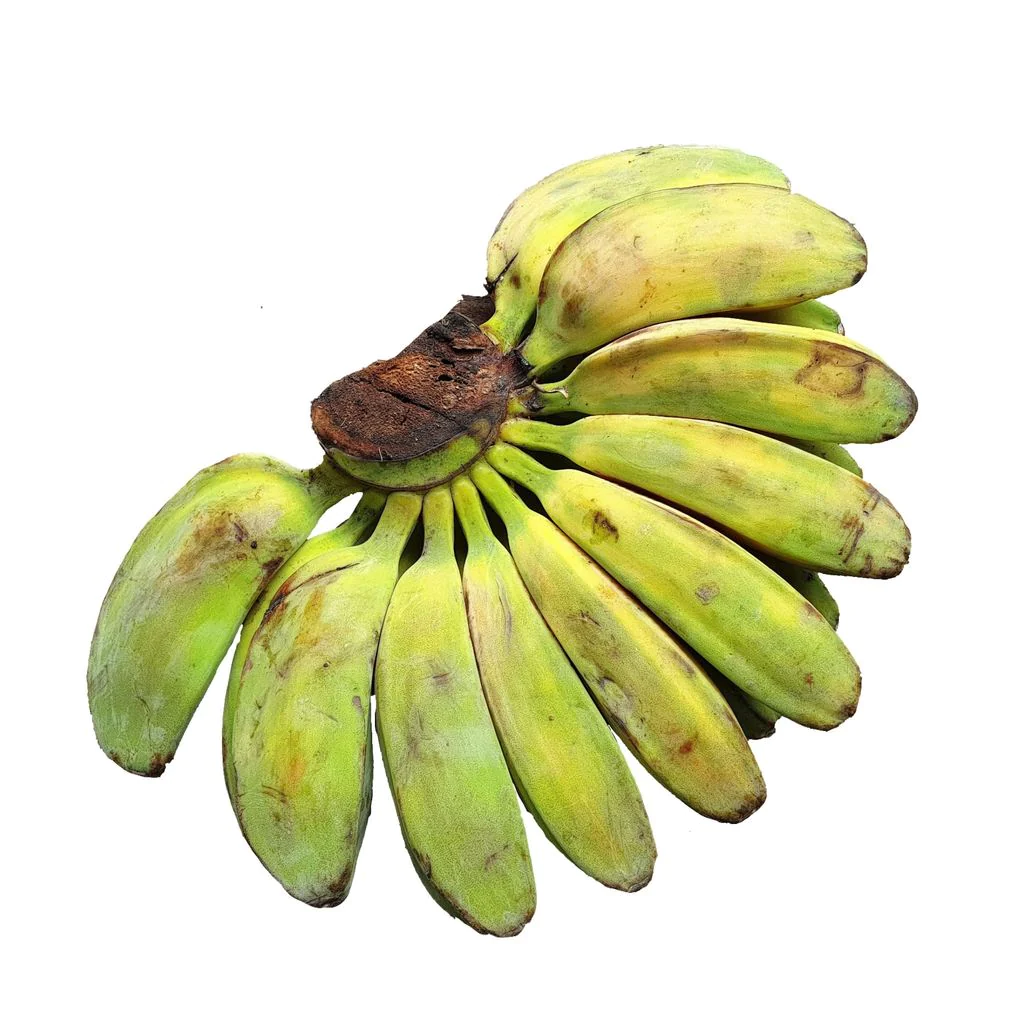
Nutritional Value
Saba bananas are a good source of dietary fiber, vitamin C, and potassium. A single Saba banana contains around 120 calories, 31 grams of carbohydrates, and 2 grams of protein.
Culinary Uses
Saba bananas are primarily used for cooking, rather than eating raw. They are often boiled or steamed and served as a side dish with savory meals. They can also be mashed and used as a thickener for soups and stews.
Saba bananas are commonly used in desserts, such as banana fritters or turon (a type of fried banana roll). Saba bananas can also be dried and ground into flour, which is used in a variety of baked goods.
20: Burro bananas
Burro bananas are a small to medium-sized type of banana that is around 15 to 20 centimeters long. They have a cylindrical shape that slightly tapers towards one end. The bananas are short and thick with angular ridges that run the length of the fruit. [22]
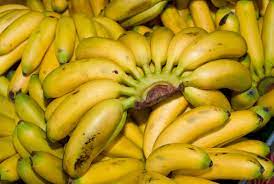
When it ripe, the flesh of Burro bananas is creamy white or yellow and has a tangy, lemony banana flavor. The center of the fruit is slightly firmer than the outer part.
Nutritional Value
Burro bananas are a good source of several nutrients that are essential for good health. Here are some of the key nutrients found in burro bananas:
Burro bananas are an excellent source of fiber. One medium-sized burro banana contains about 3 grams of fiber, which is about 12% of the recommended daily intake. One medium-sized burro banana contains about 400 milligrams of potassium, which is about 9% of the recommended daily intake.
One medium-sized burro banana contains about 15% of the recommended daily intake of vitamin C.
Culinary Uses
Burro bananas are a versatile ingredient that can be used in a variety of dishes. Here are some of the most popular culinary uses of burro bananas:
Fried plantains are a popular snack or side dish in many Latin American and Caribbean countries.
Tostones are another popular dish made from burro bananas. To make tostones, slice a green burro banana into rounds and fry them in hot oil until golden brown
21: Praying Hands Banana
The praying hands banana is a unique type of banana with two hands that grow together. Its special shape makes it easy to peel without damaging the fruit. Besides being tasty, it’s also low-maintenance and grows well in small farms, requiring little water or fertilizer. [23]
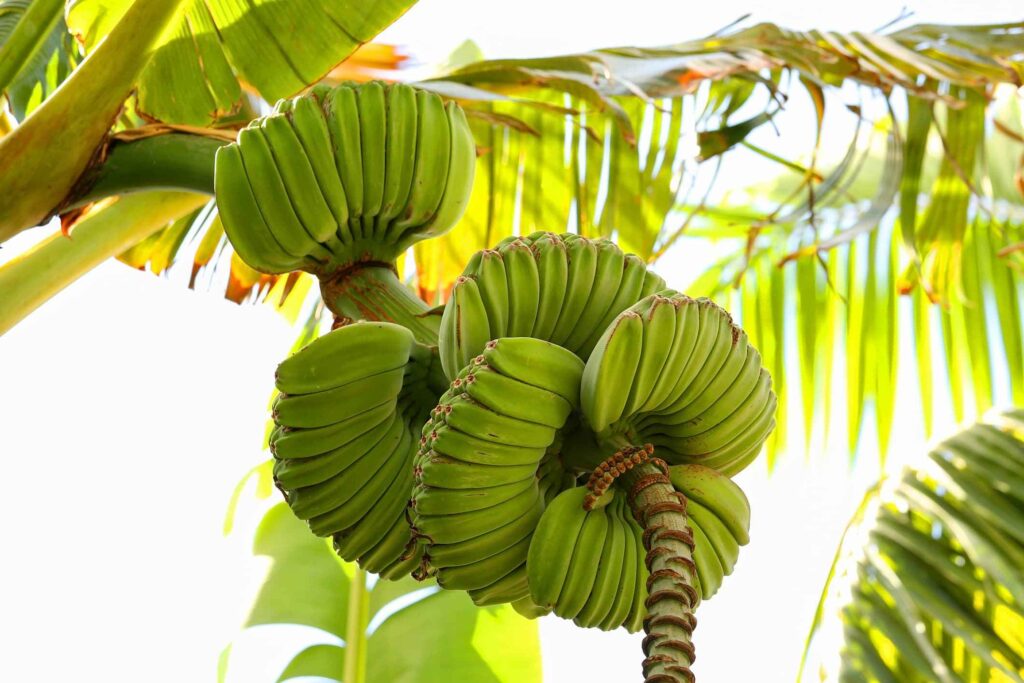
Nutritional Value
Praying Hands bananas are an excellent source of several essential vitamins and minerals. One medium-sized banana provides about 105 calories, 1 gram of protein, 27 grams of carbohydrates, and 3 grams of fiber. Additionally, Praying Hands bananas are rich in several vitamins.
Culinary Uses of Praying Hands Bananas
- Apart from their health benefits, praying Hands bananas are also delicious and versatile in the kitchen.
- Praying Hands bananas are ideal for baking due to their sweet and creamy texture.
- They can be used to make delicious banana bread, muffins, and cakes.
- Praying Hands bananas can be grilled and served as a dessert.
- Grilled bananas can be served with ice cream or whipped cream and topped with nuts or chocolate syrup.
Other types of Banana:
22: Baby Bananas
Baby bananas grow in clusters known as hands, with each hand containing around 10-12 bananas. [24] The fruit has a sweet, creamy white flesh with no seeds, and a rich, sugary, and tropical flavor with hints of vanilla and honey.
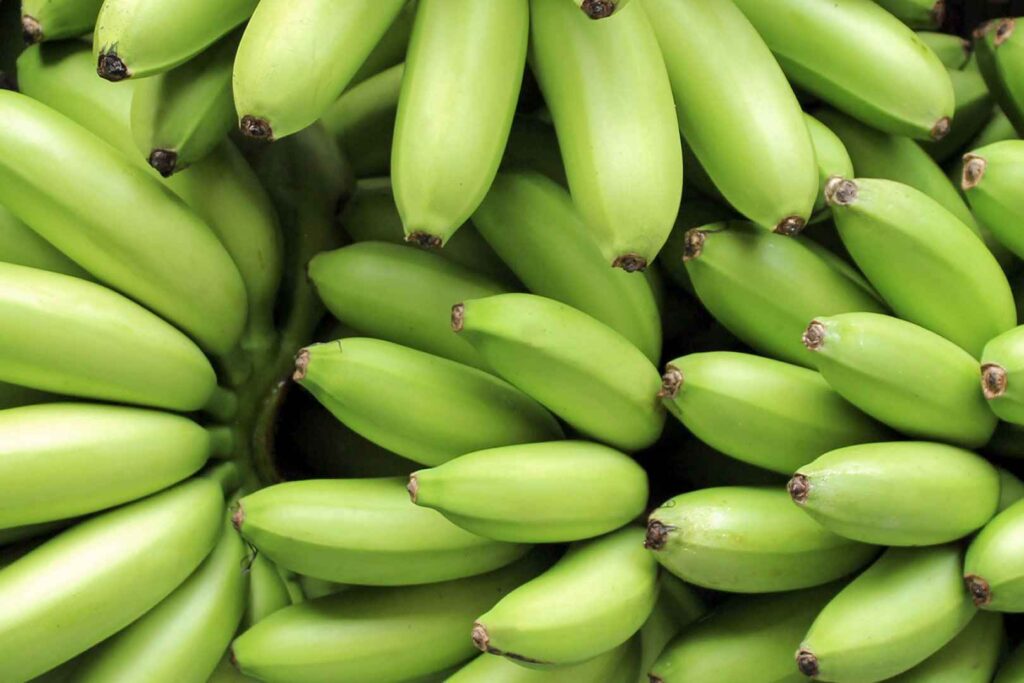
Baby bananas are easy to peel and are often eaten as a healthy snack or used in smoothies and desserts.
Nutritional Value of Baby Bananas
Baby bananas are a rich source of vitamins, minerals, and dietary fiber. Here’s a breakdown of the nutritional value of one medium-sized baby banana:
- Calories: 90
- Carbohydrates: 23 grams
- Fiber: 3 grams
- Protein: 1 gram
- Fat: less than 1 gram
Vitamins
- Vitamin C: 14% of the Daily Value (DV)
- Vitamin B6: 20% of the DV
- Folate: 6% of the DV
Minerals
- Potassium: 9% of the DV
- Magnesium: 8% of the DV
- Copper: 5% of the DV
- Manganese: 5% of the DV
Culinary Uses of Baby Bananas
- Baby bananas are a versatile ingredient that can be used in both sweet and savory dishes. Here are some popular culinary uses of baby bananas:
- Baby bananas are often added to smoothies and shakes to add a natural sweetness and creamy texture.
- Baby bananas can be mashed and added to baked goods such as muffins, bread, and cakes for a natural sweetness and moisture.
- Baby bananas can be eaten as a healthy snack on their own or paired with nut butter, yogurt, or granola.
23: Thai bananas
Thai bananas are a type of banana that is primarily grown in Thailand. [25]They are known for their sweet taste and firm texture, and are often used in traditional Thai desserts and dishes such as banana fritters and sticky rice with bananas.
There are several varieties of Thai bananas, including the popular “kluai hom thong” or golden fragrant banana, which is known for its distinct aroma and creamy texture.
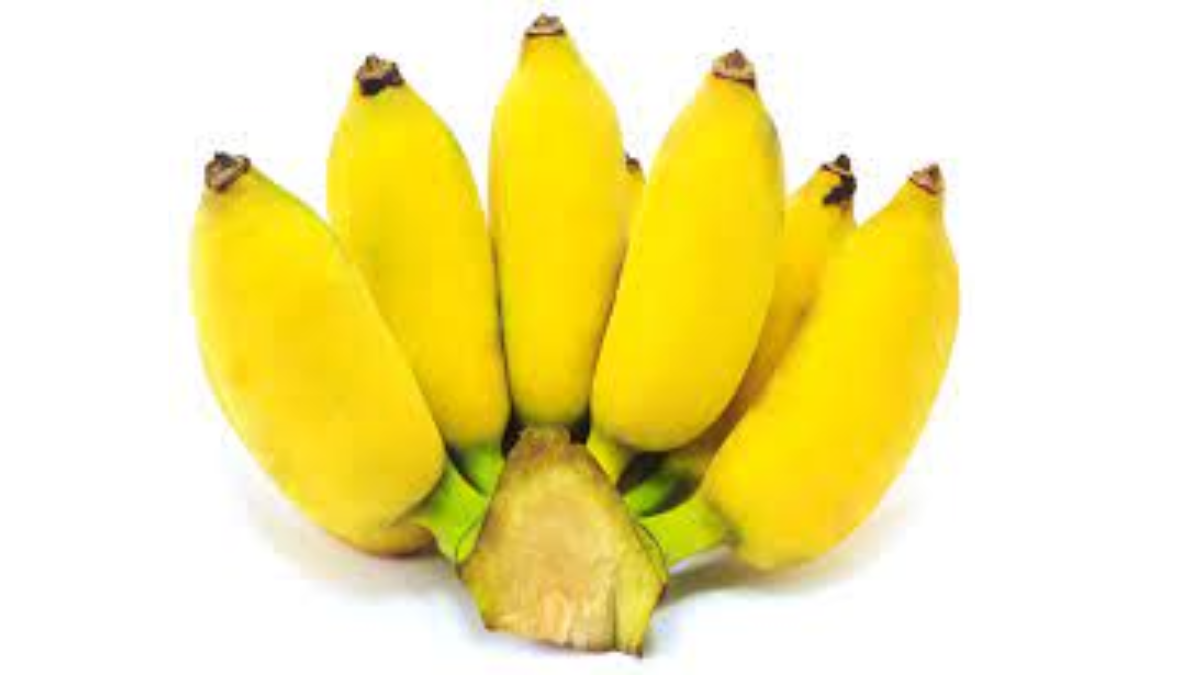
Nutritional Value
Thai bananas are a good source of dietary fiber, potassium, vitamin C, and vitamin B6. One medium-sized Thai banana contains approximately 100 calories, 25 grams of carbohydrates, and 3 grams of fiber.
Culinary Uses
- Thai bananas are commonly used in Thai cuisine, where they are used in both sweet and savory dishes.
- They are often used in desserts, such as banana fritters, cakes, and puddings.
- They can also be used in savory dishes, such as curries, stir-fries, and soups.
24: Thousand Fingers bananas
Thousand Fingers bananas, also known as Pisang Seribu, are a type of banana that is primarily grown in Indonesia and Malaysia. [26]
They are named after their unique characteristic of having a cluster of very small and slender fingers that can number up to a thousand on a single bunch.
The bananas are small and sweet, and are often used in traditional Indonesian and Malaysian desserts.
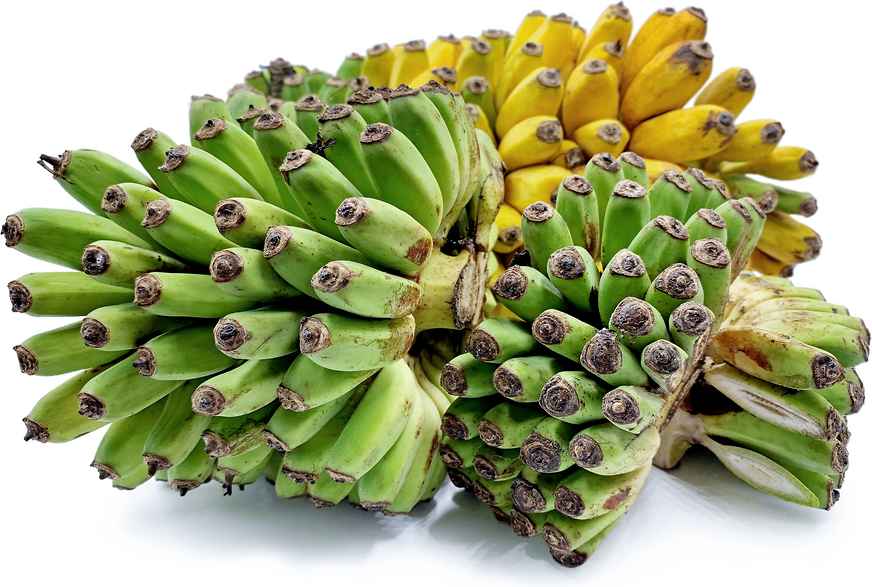
They are also popular among home gardeners because of their high productivity and disease resistance.
Nutritional Value
Thousand Fingers bananas are a good source of dietary fiber, vitamin C, and potassium. One medium-sized Thousand Fingers banana contains approximately 80 calories, 20 grams of carbohydrates, and 2 grams of fiber.
Culinary Uses
Thousand Fingers bananas are often used in Indonesian cuisine, where they are used as an ingredient in a variety of dishes. They are commonly used in desserts, such as cakes, pies, and fritters. They can also be used in savory dishes, such as curries or stir-fries.
Their small size and unique shape make them perfect for snacking, either on their own or sliced onto cereal. They can also be used in smoothies or baked goods for a unique flavor.
Thousand Fingers bananas have a slightly tangy flavor that is similar to a tart apple.
25: Apple bananas
Apple bananas are a type of banana that are small, sweet, and have a flavor that is often described as resembling that of an apple. [27]
They are shorter and plumper than the more common Cavendish bananas and are usually about 4 to 5 inches in length.
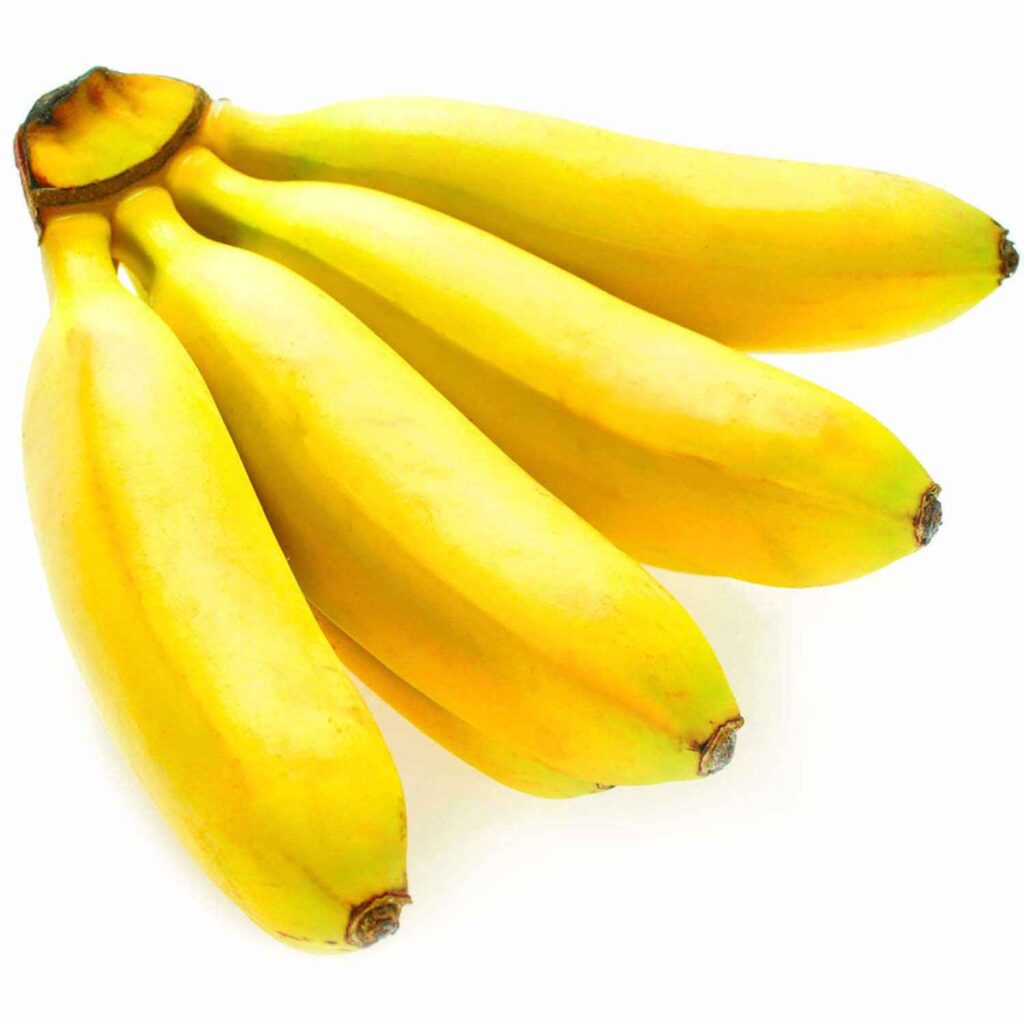
Apple bananas are primarily grown in tropical regions such as Hawaii, the Philippines, and Central and South America. They are often eaten as a snack or used in desserts and smoothies due to their unique taste and texture.
Nutritional Value of Apple Bananas
Apple bananas are a rich source of vitamins and minerals. They are particularly high in vitamin C, vitamin B6, and potassium. Here’s a breakdown of the nutritional value of a medium-sized apple banana:
Calories and Macronutrients
- Calories: 105
- Carbohydrates: 27 grams
- Fiber: 3 grams
- Sugar: 14 grams
- Protein: 1 gram
- Fat: less than 1 gram
Vitamins
- Vitamin C: 22% of the Daily Value (DV)
- Vitamin B6: 20% of the DV
- Folate: 6% of the DV
Minerals
- Potassium: 12% of the DV
- Magnesium: 8% of the DV
- Copper: 5% of the DV
- Manganese: 5% of the DV
Culinary Uses of Apple Bananas
Apple bananas are a versatile ingredient that can be used in both sweet and savory dishes. Here are some popular culinary uses of apple bananas:
Apple bananas can be mashed and added to baked goods such as muffins, bread, and pancakes for a natural sweetness and moisture.
Adding apple bananas to smoothies and shakes can give them a creamy texture and a natural sweetness.
26: Plantain Bananas
Plantain bananas are a type of banana that is starchier and less sweet than Cavendish bananas. They are commonly used in Latin American, Caribbean, and African cuisine. [28]
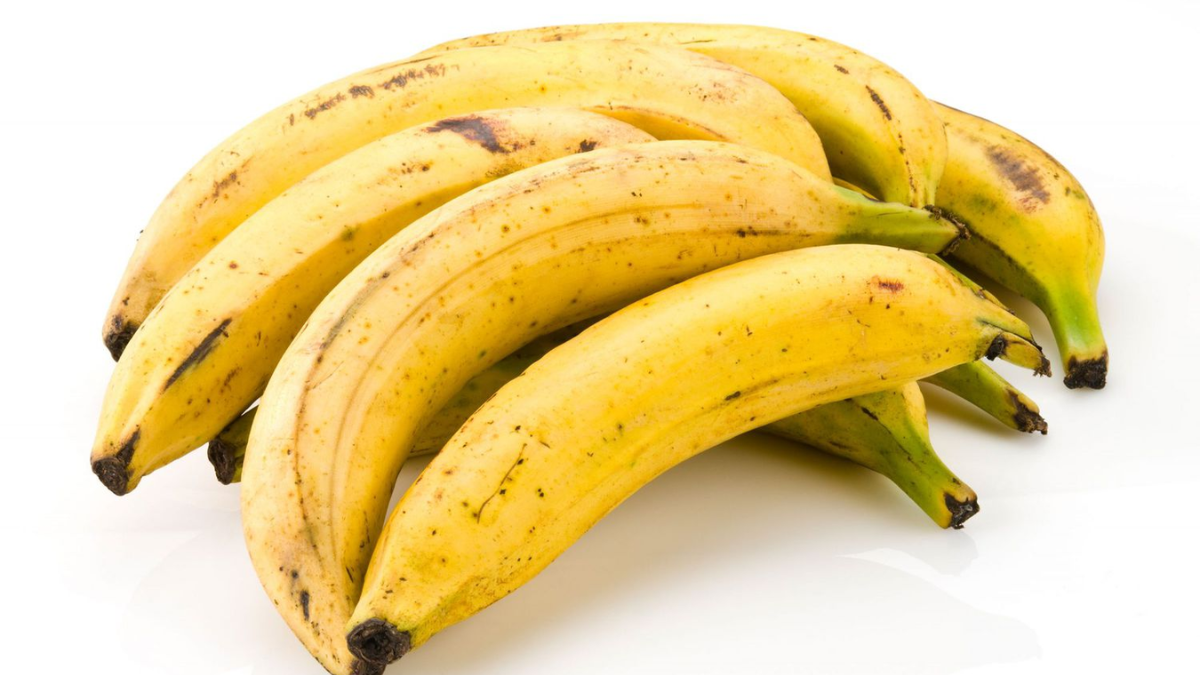
Nutritional Value
Plantain bananas are a good source of dietary fiber, vitamin A, and vitamin C. One medium-sized plantain contains approximately 220 calories, 57 grams of carbohydrates, and 4 grams of fiber.
Culinary Uses
Plantain bananas are commonly used in savory dishes, such as stews, soups, and curries. They can also be fried or boiled and served as a side dish. In some cultures, they are also mashed and used as a base for sweet or savory snacks.
Bananas are a delicious and versatile fruit that come in many different types and varieties. Each type of banana has its own unique characteristics, nutritional value, and culinary uses.
Whether you prefer the sweet flavor of Cavendish bananas or the creamy texture of Blue Java bananas, there is a type of banana out there for everyone.
FAQs
Are all bananas yellow?
No, there are many different types of bananas, and some have a different color skin, such as red or purple.
Are bananas good for you?
Yes, bananas are a good source of essential vitamins and minerals, such as potassium, vitamin C, and vitamin B6.
Can I cook with bananas?
Yes, bananas can be used in a variety of recipes, including baking, smoothies, and savory dishes.
What is the difference between plantains and bananas?
Plantains are starchier and less sweet than bananas, and they are commonly used in savory dishes.
Are there any rare or exotic types of bananas?
Yes, there are many different types of bananas that are native to specific regions, such as the Blue Java banana, which is becoming increasingly popular in other parts of the world.
